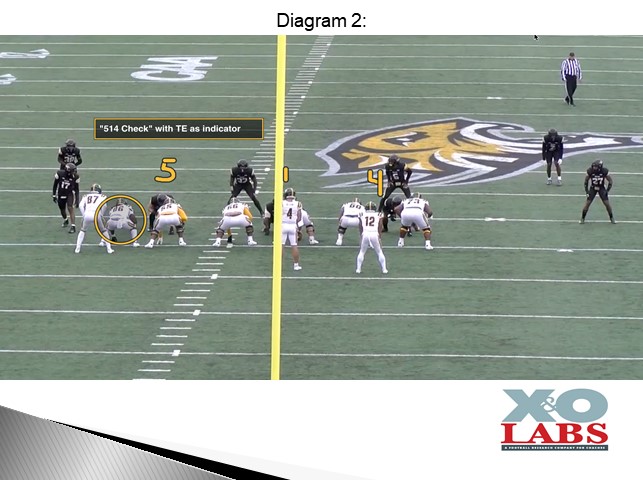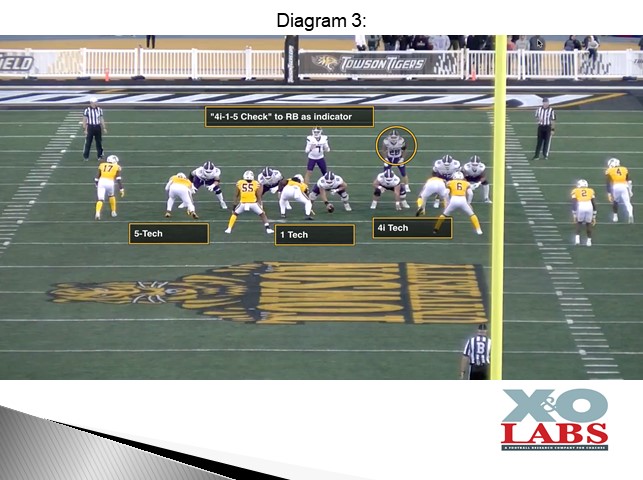By Mike Kuchar with Darian Dulin
Defensive Coordinator
Towson University (MD)
Twitter: @DarianDulin
The following is a true story. When I first got the opportunity to be a defensive coordinator in the early 2000’s like many coaches I was searching far and wide to find as much information as I could about my defense. And my defense was based on the 4-3, quarters structure scheme. Naturally, I was picking up any piece of information on that topic. The internet was not the viable source of coaching information that it is now, so most of my research came in the form of written reports in publications like American Football Monthly (which I subsequently wrote for later) and the monthly AFCA send-out.
One of these articles was written by the then-Tarleton State defensive coordinator Darian Dulin. His language made sense to me and I could tell by the way he conveyed his subject matter that we were very similar in our teaching progression. I had no idea how to get to Tarelton, but I know I needed to get there. So, I made it my mission to find a way to reach out Coach Dulin. He invited me down to stay with him and learn his defense and the rest is history and too long a story to be translated here. Fast forward over 20 years later and Coach Dulin and I remain good friends. So when he got the job as the DC at Towson- only 170 miles from my home- I was thrilled both for him and for the potential to learn more about his scheme.
I worked with Coach Dulin before. His scheme has since transitioned from stagnant four-down looks to more Odd structure pictures such as the ones he used when he assisted in winning the Division 2 national championship at West Florida back in 2019.
So when I visited with him during his first spring there, we sat to talk about how he plans on transitioning from four-down to three-down fronts in preparation for this football season.
Towson Personnel:
Towson bases out of a 3-4 with a lot of 4-2-5 principles and like many Even/Odd hybrids, the Will linebacker is more of a rush linebacker, who will play on the line of scrimmage. The Will and Nickel are edge defenders and are interchangeable and are more safety types than linebacker types. The Mike and Sam are the two interior backers. Towson plays with a field end (Freak) and a boundary end (Basher) and wants them to be in the 285-300-pound range. Linebackers play off the flow of the back and are taught to stack the down lineman in front of them on run action.
Front Strength Indicators:
What’s interesting about Coach Dulin’s system is that he calls everything by technique number. So, if the first term is “5” that tells the first-level player closest to the indicator to align in a 5-technique. It’s a number system where the first number is based on the offensive indicator which can either be the back or the tight end. Coach Dulin will code these terms by using a “Rip or Liz” call if the indicator is the Y. Consequently, he’ll use a “Roger” or “Larry” call if the indicator is the running back. These indicators are predicated on offensive tendencies and can change each week. These numbers represent the technique that’s associated with the call.
For example: “5” represents a five-technique on the outside shade of tackle, “4i” represents an inside shade of the tackle and “1” represents an outside shade of the Center. Coach Dulin starts his installation with using field/boundary alignments in the beginning but needs eventually to be adjustable to the surface strength.
So, a “4-1-5” look with the back as the indicator tells the defensive lineman to the back to align in a 4 technique, with a one-technique and five-technique away from him.

If an offense is same-side power-oriented, it makes sense to use a “4-1-5” check to the back because he’s away from the tight end and it allows for a defender to spill the down block of the Tackle.

If an offense is more G/Y counter-oriented, the “4-1-5” check away from the back is useful because it allows the five-technique to spill gap schemes to the perimeter.

There are two main principles that Towson operates out of when it comes to terming its fronts:
“Load” Check- This means the front is “loaded” to the indicator (Tight End or RB). This tells the front to move one full man over. For example, the Nose will align on the Guard not the Center.
“Edge” Check- This means the front is “edged” to the indicator (Tight End or RB). This tells the front to move one technique over. For example, a three-technique can become a 4i technique to the indicator side.
“Down” Check- This tells either the Will or Nickel to come down on the line of scrimmage. This is used against 3-man surfaces.
Any 3-man surface will always overload the back. And a “Y-Off” formation is counted as a three-man surface check to Townson and will be treated as such. This will also be applicable in Pistol formations, where the back alignment is not an issue. In off-set formations, it makes sense to have the running back be the indicator.
Let’s take a look at how these fronts are formatted based on the indicator.









